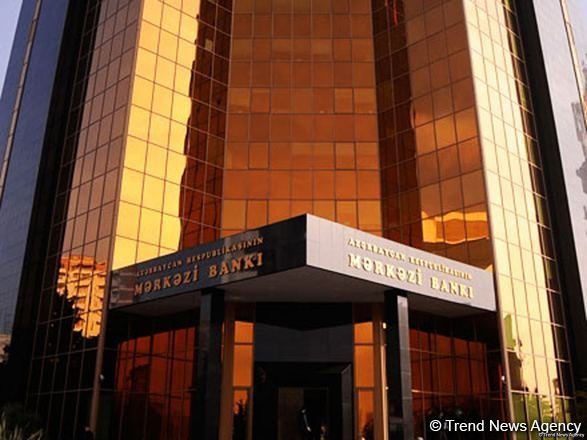BAKU, Azerbaijan, October 22. The Management Board of the Central Bank of Azerbaijan (CBA) has made a decision to keep the refinancing rate unchanged at seven percent, the lower limit of the interest rate corridor at six percent, and the upper limit of the interest rate corridor at eight percent, Trend reports via the CBA.
In making the decision on the interest rate corridor, key considerations included the alignment of actual and expected inflation with the target range (4±2 percent), current conditions in the global economy and financial markets, domestic macroeconomic trends, and the transmission of monetary policy decisions to the real sector.
Currently, annual inflation is moving close to the projected trajectory. In September 2025, 12-month inflation stood at 5.7 percent. Annual price increases were 7.9 percent for food, alcoholic beverages, and tobacco products; 5.3 percent for paid services; and 2.4 percent for non-food products. Core annual inflation was 4.9 percent.
Ongoing global uncertainty continues to cause fluctuations in commodity prices. According to the International Monetary Fund (IMF), in September 2025, the commodity price index rose by 3.3 percent year-on-year, while the food and beverage price index declined by 2.6 percent. In October, the IMF kept its global inflation forecast for 2025 unchanged at 4.2 percent and slightly increased its 2026 forecast to 3.7 percent.
The foreign exchange market remains stable, with overall supply exceeding demand. Over the past 7 months, foreign currency purchases in cash by exchange offices have exceeded sales. The dollarization level of deposits by resident individuals dropped by 1.8 percentage points over the last 12 months, falling to 29 percent in September, indicating positive expectations regarding the exchange rate. External sector indicators, which are key to currency market balance, remain favorable. According to the State Customs Committee, Azerbaijan's foreign trade surplus for the first nine months of 2025 totaled $1.8 billion. The continued positive trend in net remittance inflows compared to the previous year supports a current account surplus. The Central Bank has slightly revised upward its forecast for the current account surplus at the end of 2025, while the 2026 forecast remains unchanged.
Monetary policy instruments are applied based on developments in financial markets and the liquidity position of the banking system. Activity in the unsecured money market was high overall, with the number of transactions increasing by 16.1 percent over nine months compared to the same period last year. Interest rates in this market moved within the Central Bank's interest rate corridor and near the discount rate. The average daily level of the AZIR index was 7.15 percent in July, 6.97 percent in August, 6.96 percent in September, and 6.89 percent so far in October. The Central Bank aims to minimize the impact of non-monetary factors on the AZIR index mainly through 1-week open market operations. The issuance of manat-denominated bonds linked to the AZIR index by the European Bank for Reconstruction and Development has further strengthened its role as a benchmark rate in financial markets. Since the last meeting, there have also been decreases in the yield curve and in yields on Central Bank notes. Likewise, interest rates on newly attracted manat deposits and new loans have declined. A key factor influencing these developments was the reduction in interest rate corridor parameters in July of this year.
Under the baseline scenario, annual inflation is forecast to remain within the target range through the end of 2025 and into 2026. The October projections foresee annual inflation at 6 percent in 2025 and 5.7 percent in 2026. The upward revision of the inflation forecast is mainly linked to supply-side factors.
There have been no significant changes in the inflation risk balance since the last meeting. Instability in the global trade environment continues to drive volatility in commodity and financial markets. The impact of import prices—the main external risk factor—on domestic inflation depends on inflation in trading partner countries and the dynamics of the nominal effective exchange rate. Regarding domestic risk factors, updated forecasts suggest that inflation in the coming period will mainly be driven by supply-side and cost-related pressures. The initial parameters of the 2026 state budget and the slowdown in annual credit growth reduce the risk of excessive aggregate demand growth.
The next decision on the parameters of the interest rate corridor will depend on the direction of actual inflation and the dynamics of external and internal risk factors. The Central Bank will continue to use all available tools to ensure price stability.
The next announcement on interest rate corridor parameters will be made public on December 10, 2025.
Stay up-to-date with more news on Trend News Agency's WhatsApp channel







